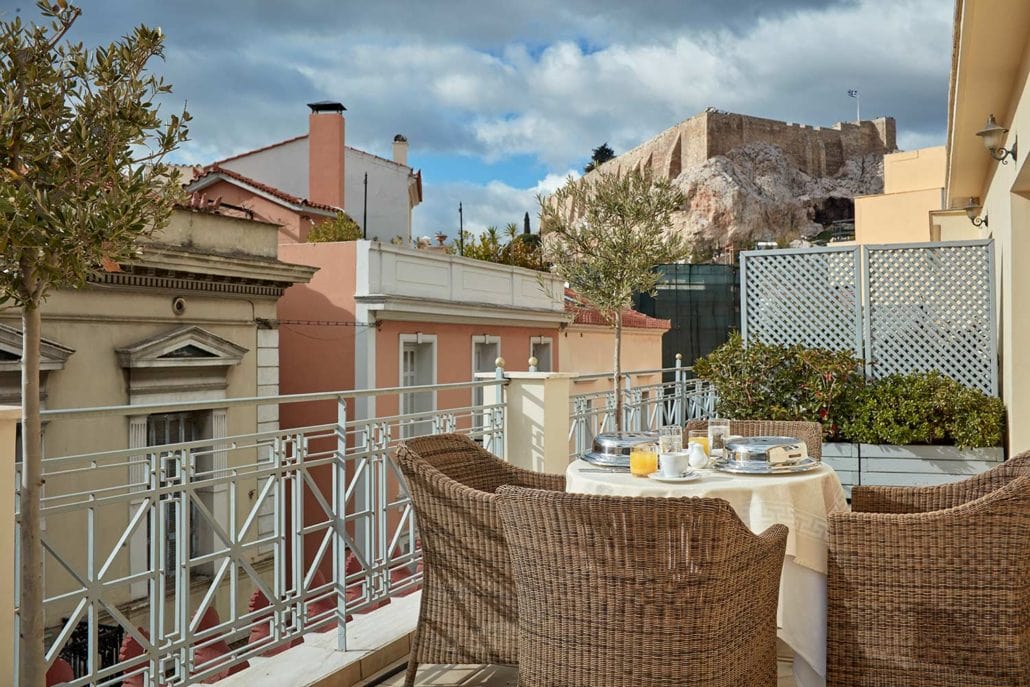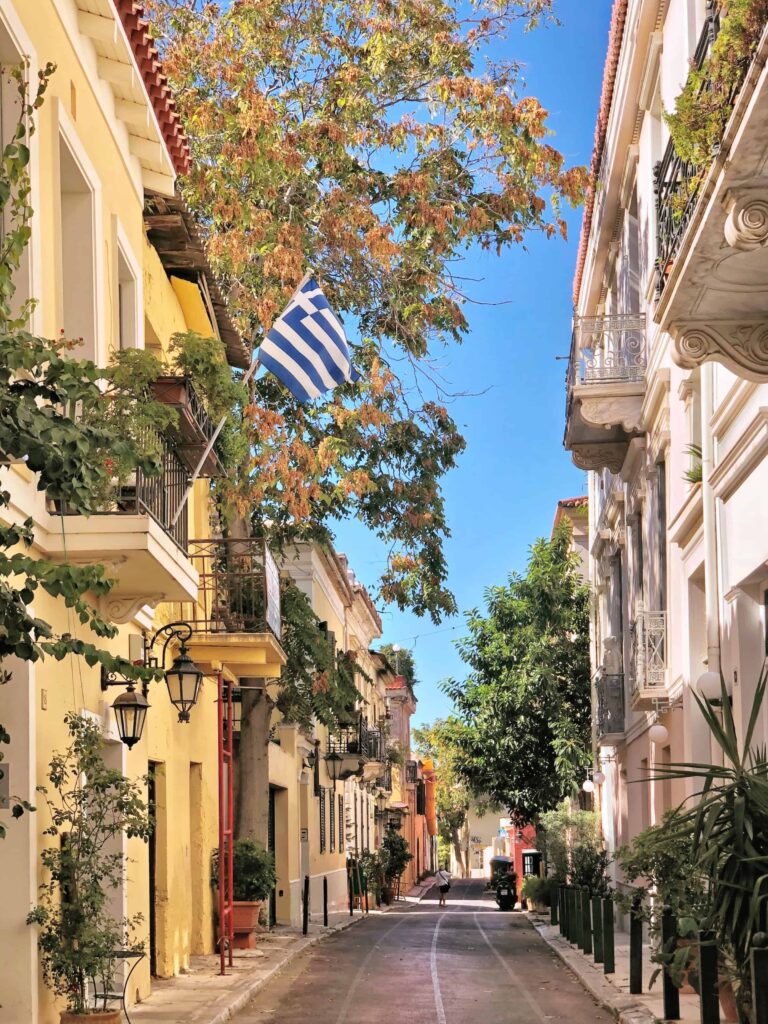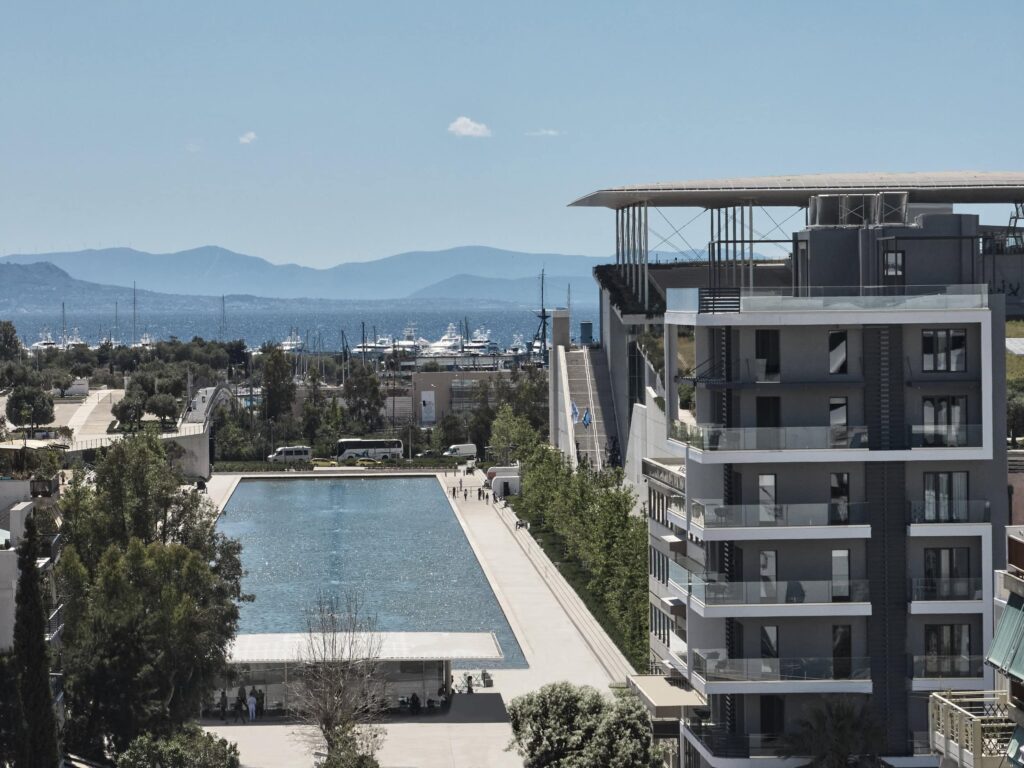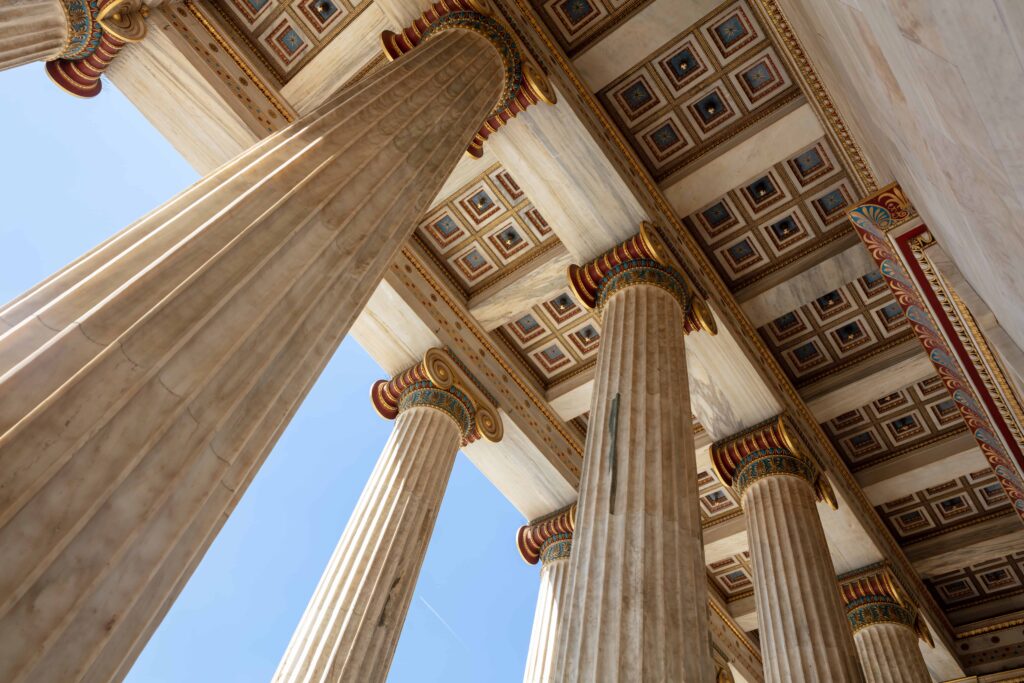An extraordinary melting pot of mythology and modernism, a bustling city that never sleeps
Discover Athens
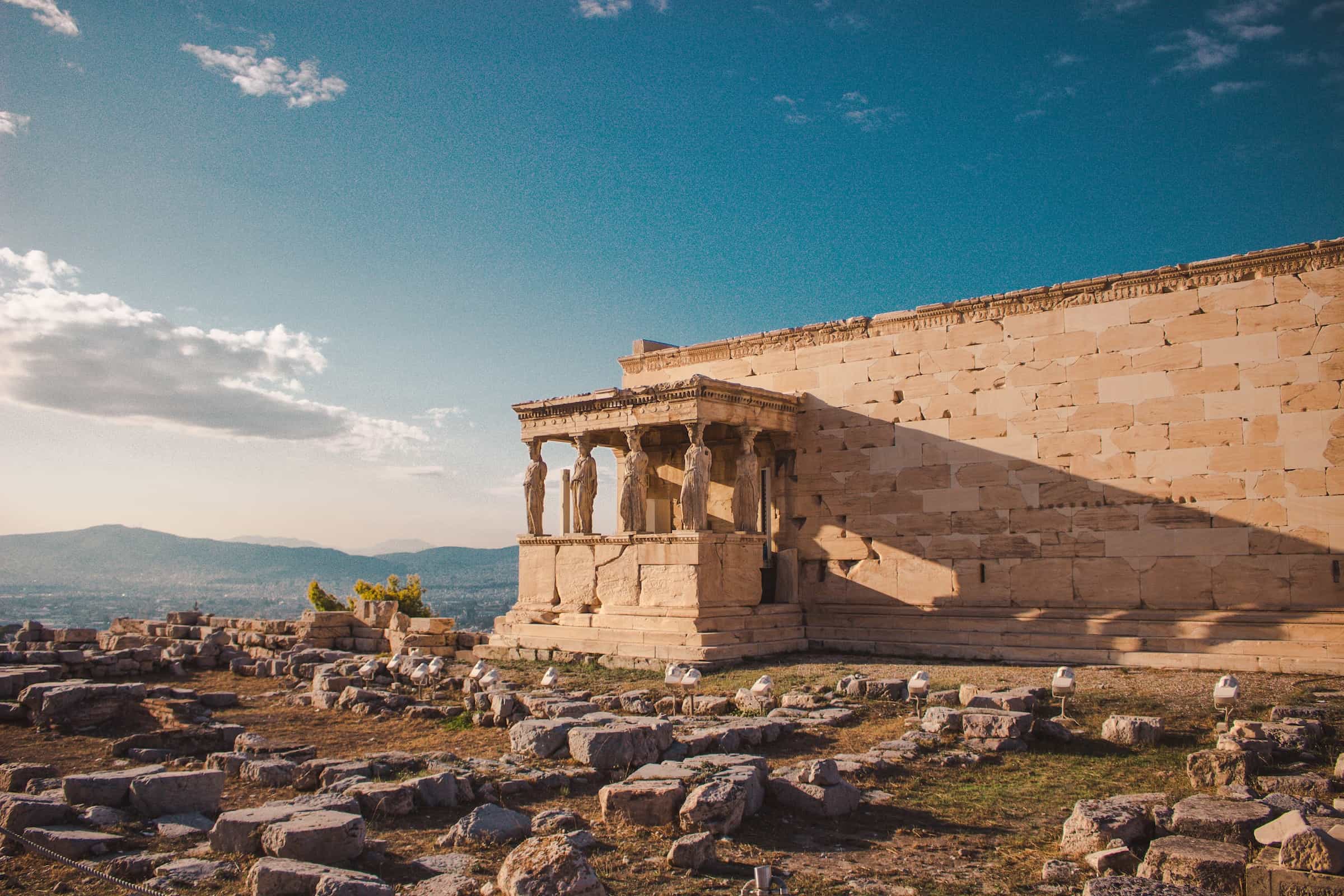
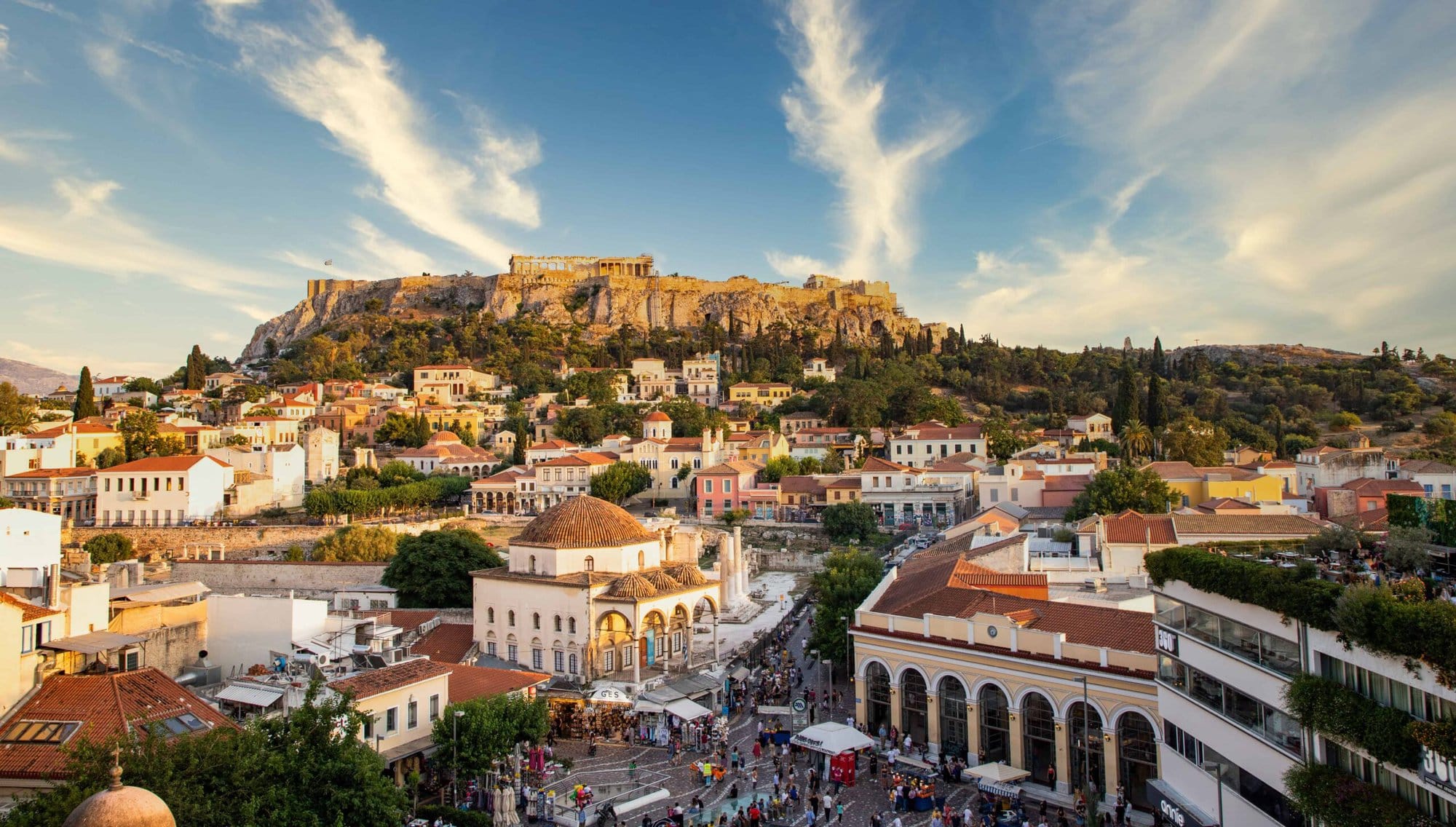
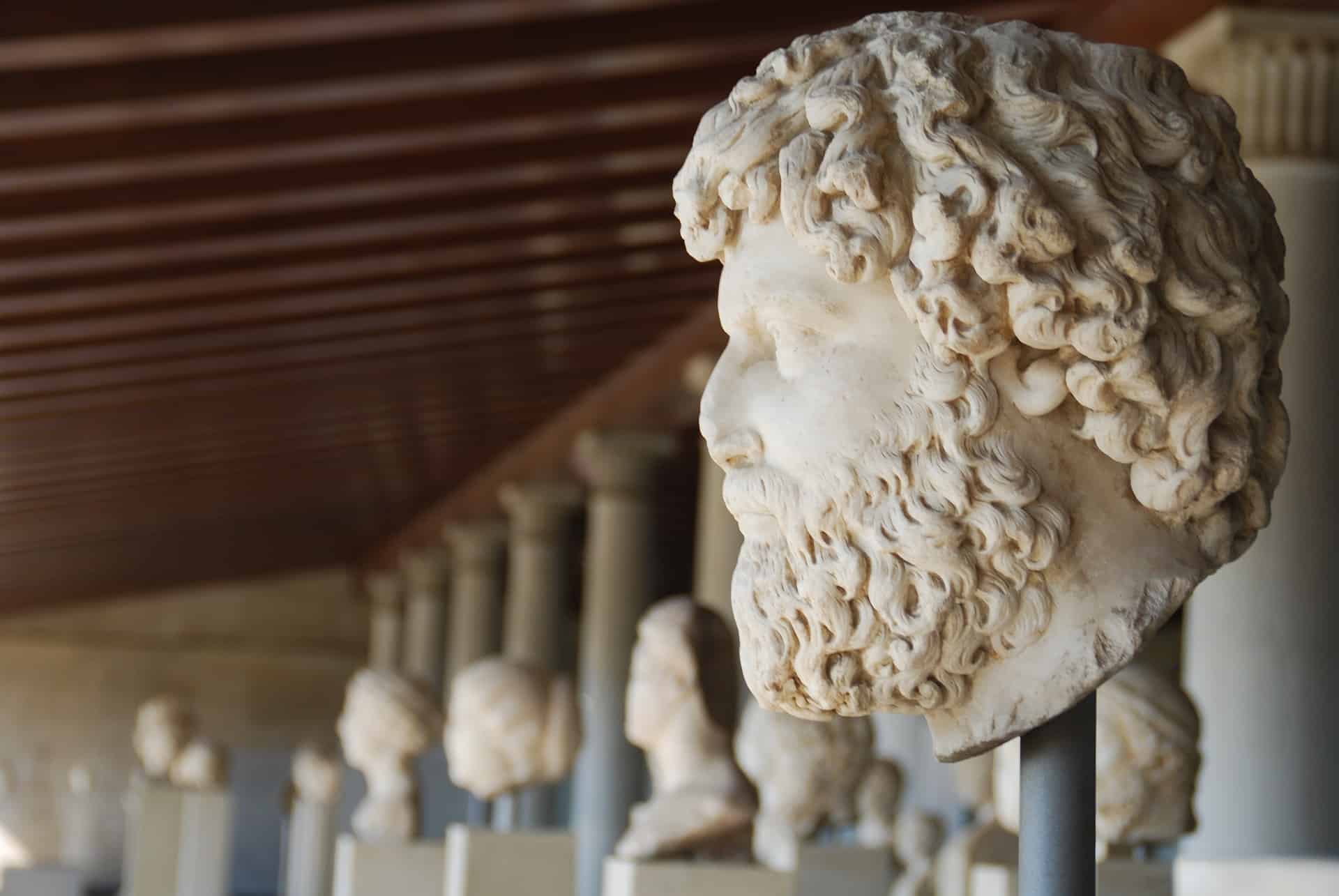
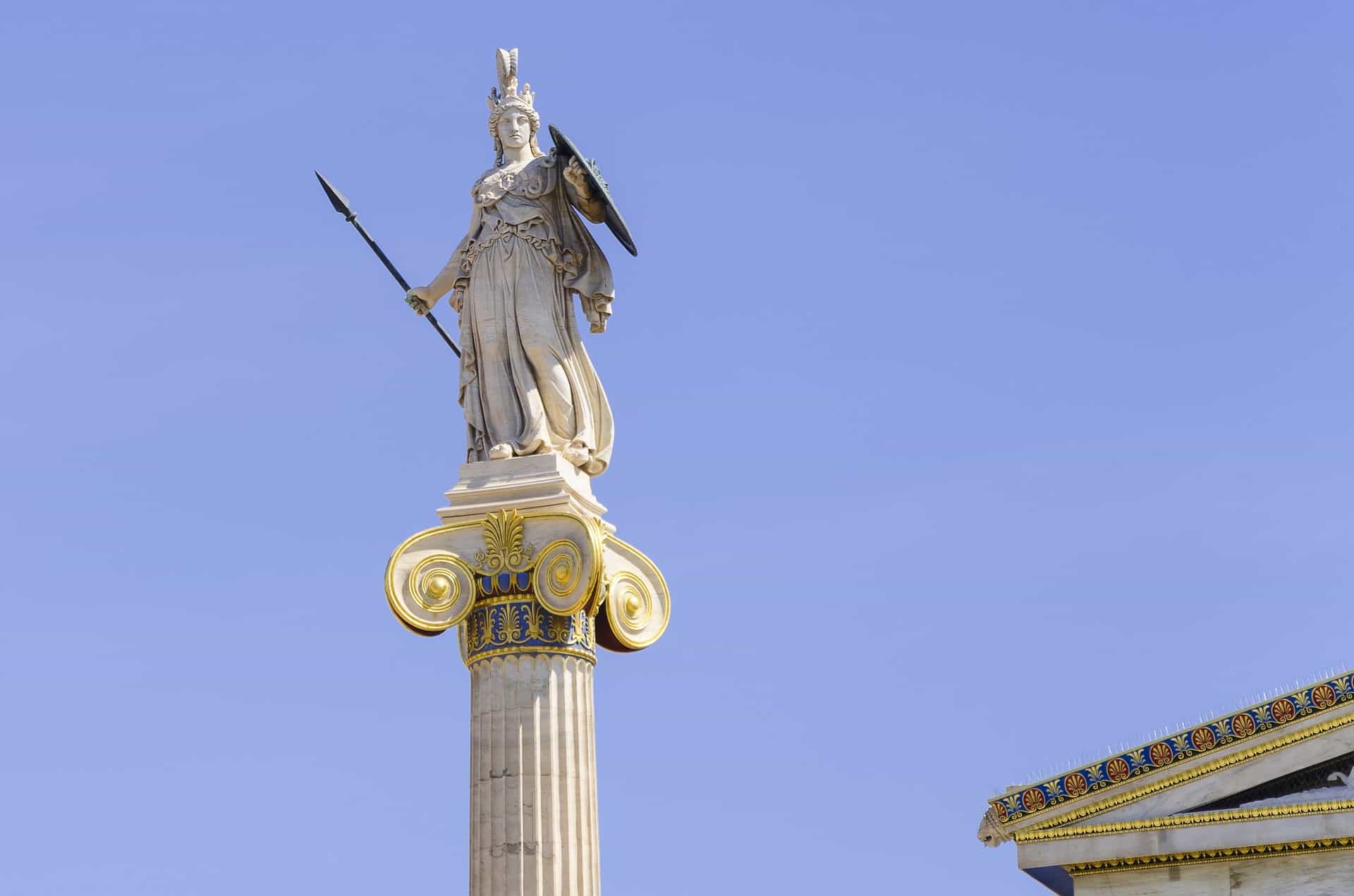
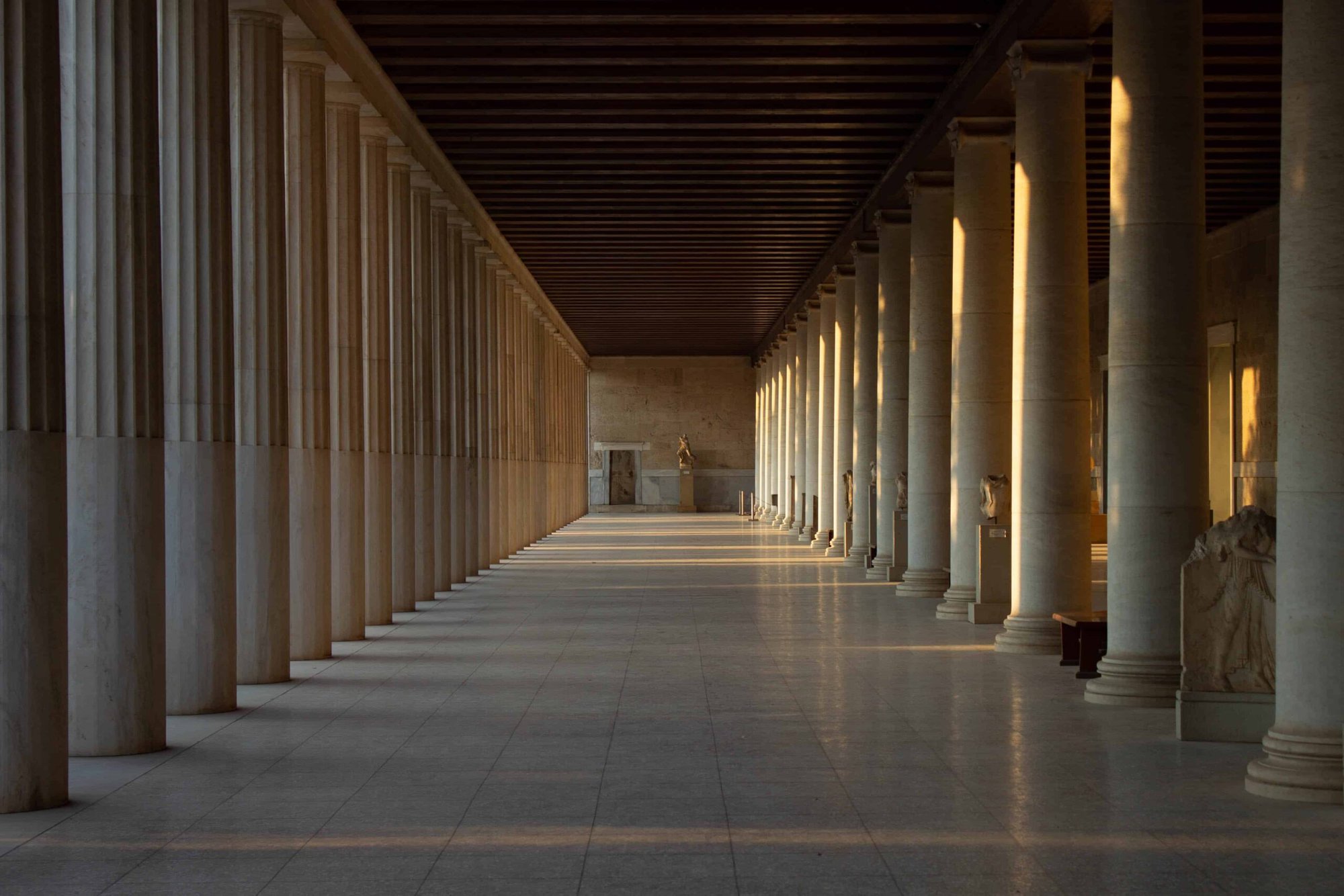
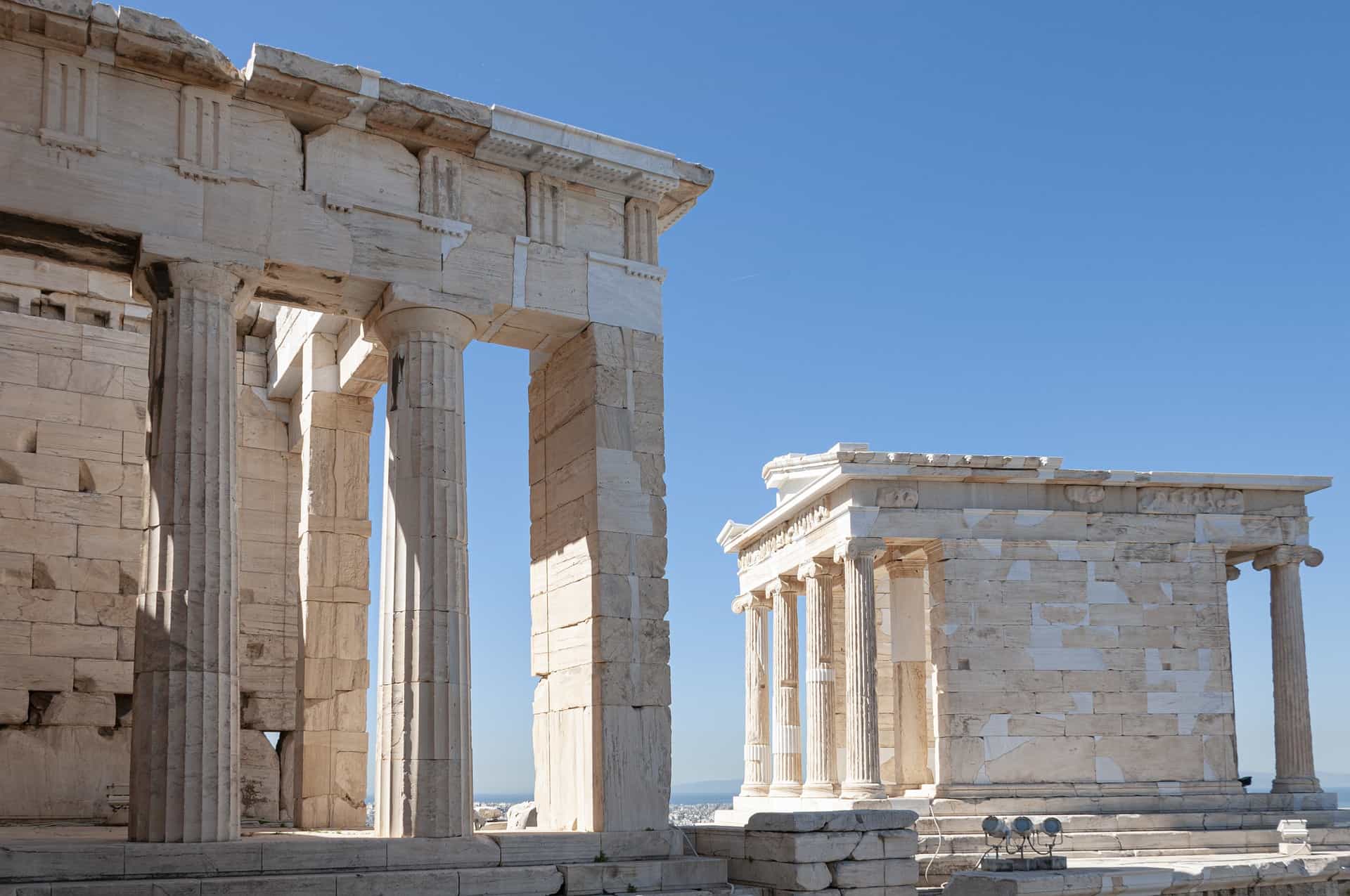
The Acropolis (edge of the city / citadel) has been mainly utilized as a religious and residential district as well as the stronghold of the city of ancient Athens.
During the second part of the Persian Wars on 480 B.C., the King Xerxes of Persia invades Athens and in return of his father Darius’ defeat from the Athenians at Marathon on 490 B.C., razes the city to the ground and burns all the temples on the Acropolis. The Athenians, having fled to the nearby island of Salamis could do nothing but sit and watch their city being destroyed.
After the utter defeat of the Persians at Platae on 479 B.C. by the united city-states of Greece, the Athenians rebuilt their city and gradually evolved to become an empire and the cultural centre of Greece and the ancient world (Pericles’ Golden Age).
It was during that period that the Parthenon was built (447 – 432 B.C.) and the Acropolis started taking the form it retains to this day. Envisioned by Athens’ ruler Pericles and assigned to architects Iktinos, Kallikrates, and the sculptor Pheidias, the Parthenon and the Acropolis would become an eternal symbol of civilization, Greek religion and of the city itself.
Through the ages, it has also become an unsurpassed exhibit of architecture and sculpting.
The Parthenon (house of virgins) is dedicated to Athens’ patron goddess Athena, a virgin goddess (Parthenos), whose priestesses were virgin maidens of Athens’ aristocracy.
Other important temples and monuments atop the Acropolis are The Erectheion (in memory of the mythical king Erectheon), the Temple of Athena Nike (Athena victory) and the Propylaea (the gateway of the Acropolis).
After the construction of the temple of Zeus the Athenians honored Hadrian by building, in AD 131 an arched gateway in the north-west corner of the enclosure of the temple. The arch, built of Pentelic marble (Penteli is one of the mountains surrounding the basin of Athens) , bears two inscriptions. The one on the side facing the Acropolis (west facade) reads:
“This is Athens, the ancient city of Theseus”
while the other the side facing the sanctuary an the extension of the city by Hadrian reads:
“This is the city of Hadrian and not of Theseus”
The Acropolis Museum is the archaeological museum focused on the findings of the archaeological site of the Acropolis of Athens. The museum was built to house every artifact found on the rock and on its feet, from the Greek Bronze Age to Roman and Byzantine Greece. The museum designed by Bernard Tschumi was opened to the public on June 21, 2009. Tschumi’s design revolves around three concepts: light, movement, and a tectonic and programmatic element. Together these characteristics “turn the constraints of the site into an architectural opportunity, offering a simple and precise museum” with the mathematical and conceptual clarity of ancient Greek buildings.
Nearly 4,000 objects are exhibited over an area of 14,000 square metres. The collections of the museum are exhibited on three levels while a fourth middle level houses the auxiliary spaces such as the museum shop, the café and the offices. On the first level of the museum there are the findings of the slopes of the Acropolis. The long and rectangular hall whose floor is sloping, resembles the ascension to the rock. Then, the visitor is found at the large trapezoidal hall which accommodates the archaic findings. On the same floor there are also the artifacts and sculptures from the other Acropolis buildings such as the Erechtheum, the Temple of Athena Nike and the Propylaea and findings from Roman and early Christian Athens. However the visitor is intended to see the latter during descent so as to keep the chronological order because he will first be directed to the last level of Parthenon marbles. The Parthenon hall has the same orientation with the temple on the Acropolis and the use of glass allows the natural light to enter.
As the museum is built over an extensive archaeological site, the floor, outside and inside, is often transparent using glass and thus the visitor can see the excavations below.
Herodes Atticus (A.D. 101-177) was a Greek rhetorician, philosopher, teacher and was elected archon (ruler) of Athens. He was also a very wealthy man, allegedly due to the great fortune his father had discovered in one of his estates.
The “Herodes Atticus Odeon”, more commonly known as the “Herodeion”, is one of many contributions Herodes offered in his own expense to adorn Athens and was erected in memory of his wife Rigillee, in A.D. 161.
The Odeon was restored in 1955 and has since been used to stage various concerts and events that take place in the summer months.
According to the traveller Pausanias, the temple of Olympian Zeus was founded by Deucalion, one of the mythical ancestors of the Greeks. Around 515 BC the Peisistratids one of the dynasties of tyrants (absolute rulers) of ancient Athens endeavoured to replace the old temple with a new, more impressive one. But tyranny was abolished and the construction. The construction of the temple was resumed by the Roman architect Decimus Cossutius employed by Antiochos IV Epiphanes King of Syria. When Antiochos died in 163 BC the temple was once more abandoned without a roof and pediments and it was finally completed by the Roman Emperor Hadrian in AD 131.
It is one of the most characteristic quarters of the old Athens, with narrow and winding lanes and small buildings that date back to Byzantine and Ottoman period. There are many craft shops selling almost everything, from bronze objects to musical instruments, furniture to shoes. In Monasteraki and Plaka area, you will find many Byzantine churches (11th and 12th centuries). On Mitropolis square, the Metropolitan Cathedral of Athens (Megali Mitropoli). This is the cathedral church of the Archbishop of Athens and all Greece. Construction of the Cathedral began on Christmas Day, 1842 with the laying of the cornerstone by King Otto and Queen Amalia. Next to it the smallest church in the world, the pretty little church of Agios Eleftherios, also known as Mikri Mitropoli (“little metropolitan church”). On the parallel street of Ermou, exactly in the middle of the street that leads to Syntagma, the church of Panaghia Kapnikarea.
On Monasteraki square, the Tzisdaraki mosque, a historic Ottoman mosque constructed in 1759, houses now the Museum of Greek Ceramic Art.
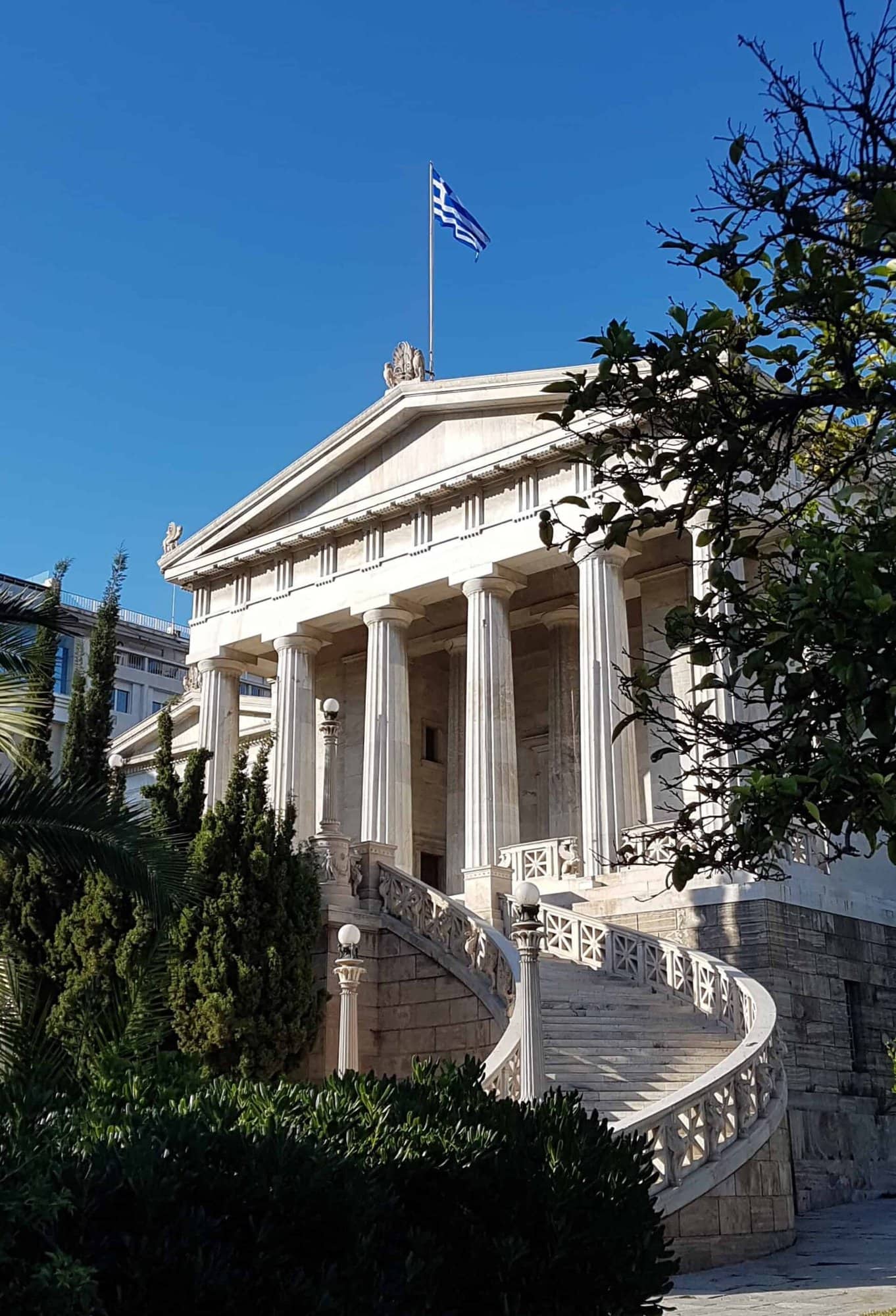
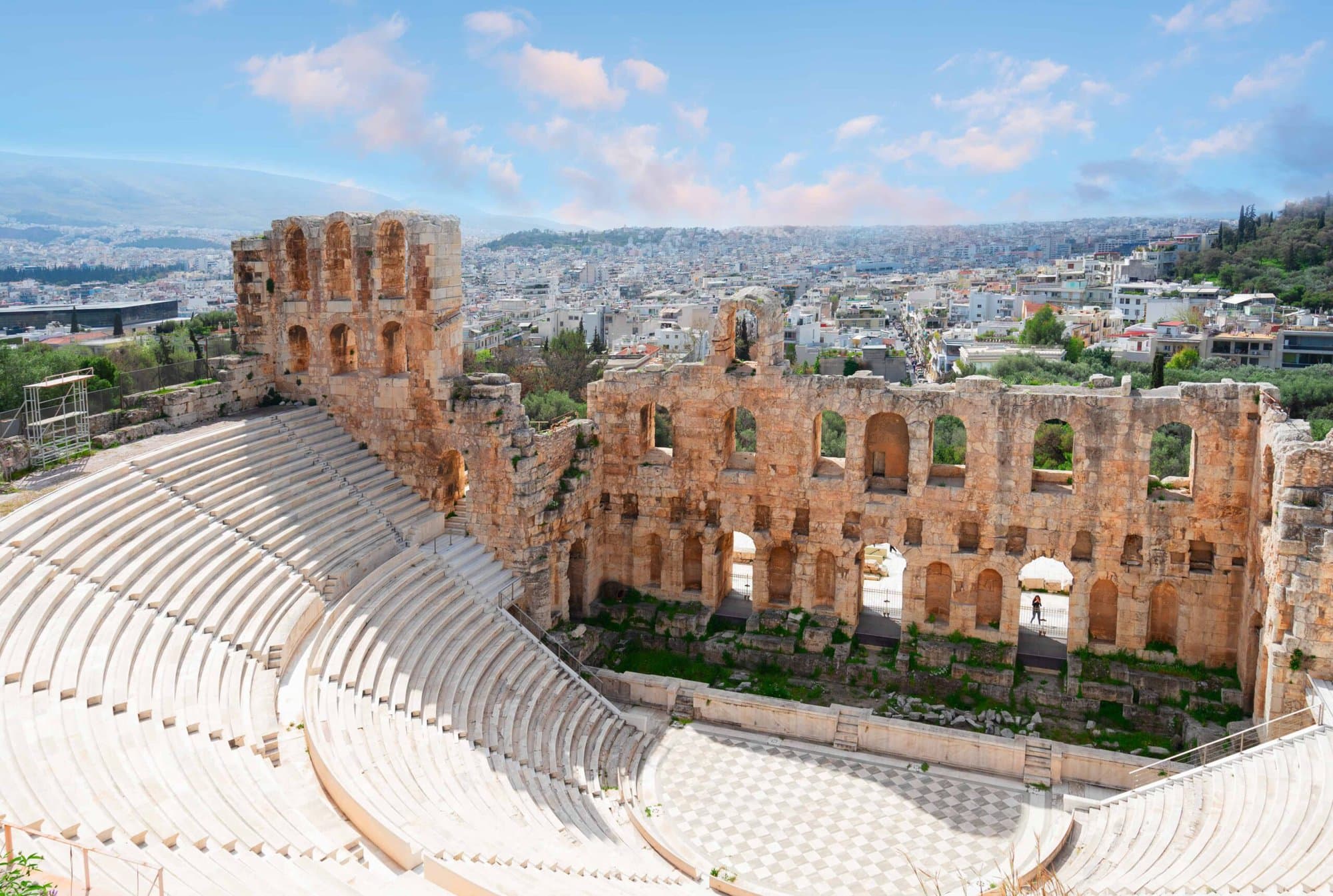

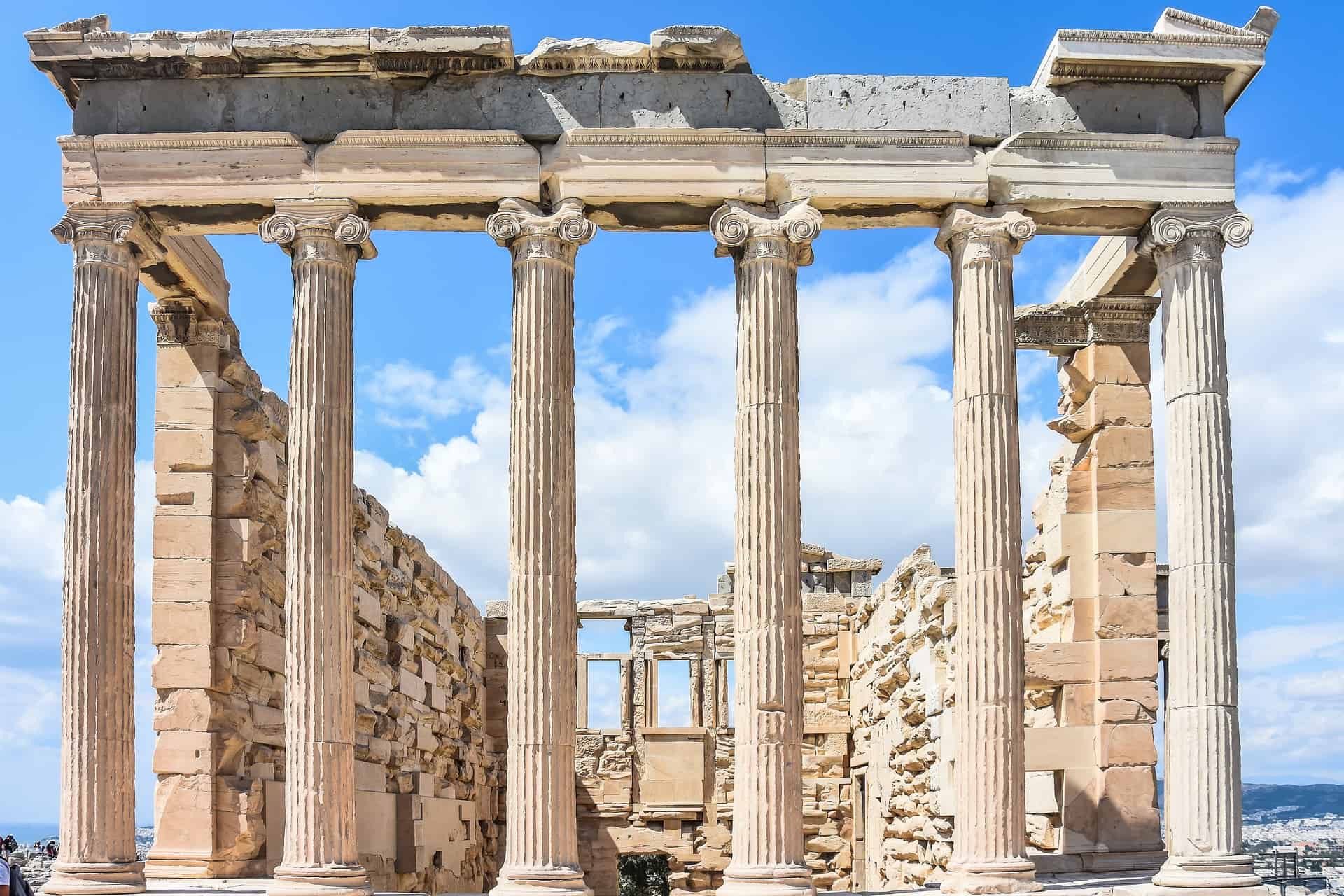
The site that would later be called the Agora had been inhabited since the late Neolithic period (3000 B.C.) and used as a residential area and a burial ground.
In Solon’s time (6th century B.C.) the Agora of Athens (as it was named) became the place where everyone could speak his mind regarding the administering of his city and where all of the Athenians’ daily activities would take place (Agora: from ancient Greek ‘agorevo’ = to speak thoroughly about something)
It was the place where political deliberation would occur and where justice and social affairs as well as religious matters would be attended.
It also served as the centre of the Athenians’ trade dealings.
The Agora has suffered severe damage through the course of it s history and was gradually abandoned.
In 1834, when Athens became the capital of the independent new state of Greece, the Agora was redeveloped as a residential area. After numerous excavations after that time, part of the site has been recovered and is now a historical site.
The Roman agora was the centre of commercial activity of the city during Roman Times. It was constructed between 19 and 11 B.C. by the Roman Emperor Augustus to accommodate the commercial enterprises of the city, with shops, storerooms and offices. The Roman Agora consists of a large, open-air courtyard surrounded by colonnades on all four sides. The main interest of this Agora lies in the Tower of Winds, or the Horologion of Andronikos of Kyrrhos, is a tall, octagonal building immediately east of the Roman Agora. It was designed by a famous astronomer (Andronikos of Kyrrhos) to be an elaborate water clock (on the inside), sundial (on the outside), and weather vane (on the top). The nickname “Tower of the Winds” is derived from the personifications of the 8 winds carved on the 8 sides of the building.
The area of the Panathinaikon stadium was originally a natural ground cavity, by the Illisus River.
On the year of 330-329 B.C. and by initiation of Lycurgus of Athens, a stadium was to be constructed on that site to accommodate the athletic activities of the Panathinea, the greatest of festivities in ancient Athens.
Around 140-144 D.C. the stadium was repaired from Herodus Atticus (an Athens ruler of the Roman Empire) and was later also used as a Roman arena with the addition of a cylindrical wall in its centre.
In the course of its history the stadium had been ruined and lost, only to be rediscovered in an excavation in the year of 1870 and to be later restored in order to accommodate the first modern Olympics in 1896.
For its rebuilding, marble from Penteli was used.
Penteli is one of the mountains surrounding Attica, rich in fine marble up to this day, from which the Parthenon and other temples and famous monuments have been constructed with.
Hence, the Panathinaikon Stadion is more commonly known as the ‘Kallimarmaron’ (made of fine marble).
Today, the stadium is mostly a tourist attraction, but is still used on various special occasions.
In the year 1833, Greece’s capital city was moved from Nauplion were it had previously been for 3 years after the declaration of Independence of the country, to Athens.
Following the appointment of prince Otto of Bavaria as king of Greece, housing was now needed in Athens for him and his ministries.
The design and construction of the palace was assigned to German architect Friedrich von Gaertner and was finished in the year of 1843.
It has since undergone through many renovations and reconstructions, sometimes due to severe damage and other times due to the changes of its use.
In 1929, the Greek government decided to move the Parliament from the Parliament House on Stadiou Street to the building of the Palace.
The architect Andreas Kriezis redesigned the Old Palace building in order to transform it into a Parliament.
After the reinstatement of Democracy in Greece in 1974, and the composition of a new Constitution in 1975, the Parliament building has been subject to renovations that continue up to this day.
National Gardens / Zappion Athens
One of the most visited places of Athens by both tourists and Athenians is the National Garden. Situated close to the Parliament, the Garden was created in 1839 on the direction of queen Amalia, wife of king Otto, in order to provide the newly constructed palace (now the Parliament building) with an exotic garden filled with plants and trees from all over the world.
The garden is the largest wooded area in the Athens centre and also encompasses a duck pond, a library for children and a playground, as well as a small botanical museum and several coffee shops.
Its entrance is on Amalias Avenue and is open from dawn until sunset.
This is an imposing hill, 147 m high, situated to the southeast of the Acropolis and once used as a sanctuary to the Muses (Mouseion). On top of the hill, it is still possible to see the foundations for the surrounding fortified wall dating from 294 BC, built by Demetrius the Besieger to install his guards. Later, in Roman times (115 AD), the City gave permission for a burial monument to be erected here in honor of Philopappos, a descendant of the Seleucids.
In 1954-1957, the architect and thinker Dimitris Pikionis formed a wonderful area for viewing the Acropolis from the hill of Philopappou. From this point you have the best view of the Parthenon and the splendid monuments on the Acropolis. Besides the Philopappos monument, there is the “Prison of Socrates”, the “Tomb of Cimone” and a theatre.
